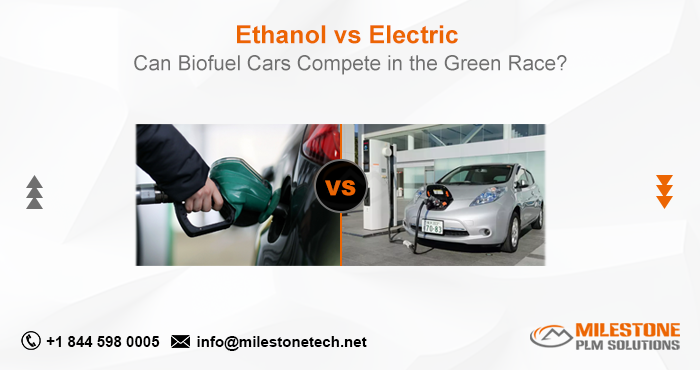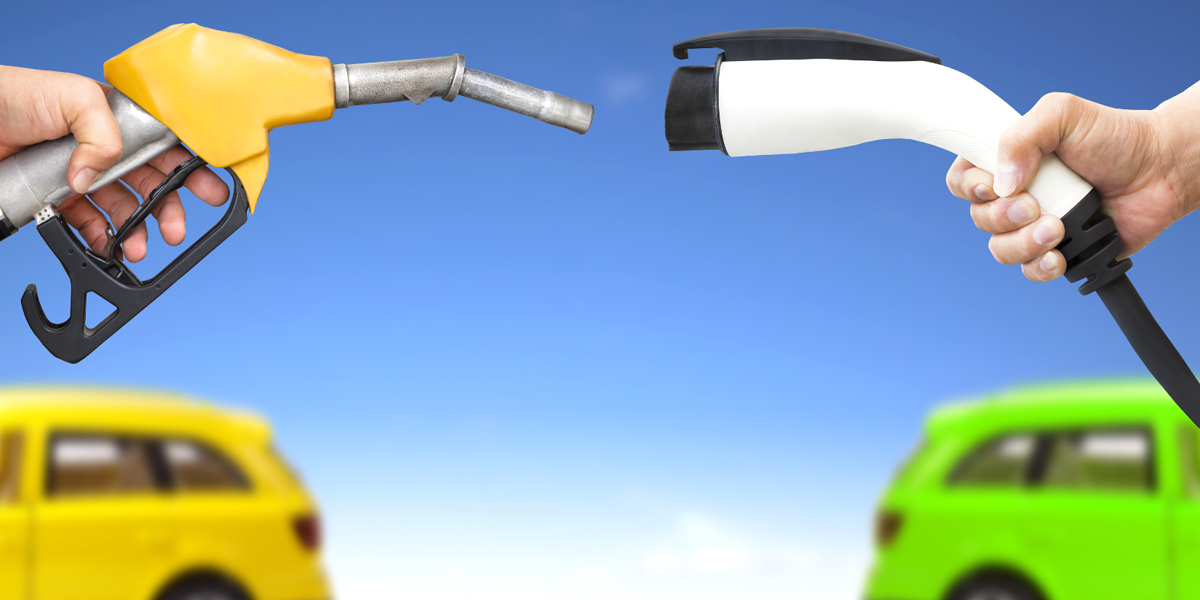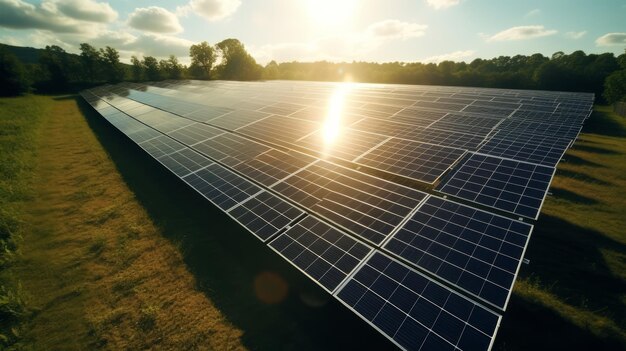
Biofuels vs. Electric Vehicles: Which is Greener? A Deep Dive into Sustainable Transportation
The race to combat climate change has put the transportation sector under a massive spotlight. With cars, trucks, and planes contributing significantly to global greenhouse gas emissions, finding greener ways to move people and goods is more urgent than ever. Two major contenders have emerged in this quest for sustainable mobility: Biofuels and Electric Vehicles (EVs).
But which one truly holds the key to a greener future? Is there a clear winner, or is the answer more complicated than it seems? This comprehensive guide will break down the environmental impact of both, helping you understand the complexities of sustainable transportation.
The Urgent Need for Greener Transportation
Before we dive into the specifics, let’s understand why this discussion is so critical. Our planet is warming at an alarming rate, largely due to human activities that release greenhouse gases like carbon dioxide (CO2) into the atmosphere. A significant portion of these emissions comes from burning fossil fuels (gasoline, diesel) in our vehicles.
Shifting away from fossil fuels is essential for:
- Reducing Air Pollution: Leading to cleaner air and better public health.
- Mitigating Climate Change: Slowing down global warming and its devastating effects (extreme weather, sea-level rise).
- Resource Security: Less reliance on finite fossil fuel reserves.
Now, let’s look at how Biofuels and EVs stack up.
Understanding Biofuels: Fuel from Living Things
Biofuels are a type of fuel derived from biomass – organic matter like plants, algae, or animal waste. Unlike fossil fuels, which take millions of years to form, biomass can be replenished relatively quickly, making biofuels a potentially renewable energy source.
Common Types of Biofuels:
- Ethanol: Often made from corn, sugarcane, or cellulosic materials (like switchgrass or wood chips). It’s commonly blended with gasoline (e.g., E10, E85).
- Biodiesel: Produced from vegetable oils (soybean, palm, canola), animal fats, or recycled cooking oil. It can be used in diesel engines, often blended with petroleum diesel.
The "Green" Argument for Biofuels
Proponents of biofuels highlight several environmental benefits:
- Renewable Resource: Unlike fossil fuels, the raw materials for biofuels can be regrown, offering a continuous supply.
- Carbon Neutrality (in theory): Plants absorb CO2 from the atmosphere as they grow. When biofuels are burned, they release CO2, but the idea is that this CO2 was already part of the natural carbon cycle, not new CO2 dug up from the earth. This is often referred to as a "closed-loop" or "carbon-neutral" cycle.
- Reduced Tailpipe Emissions: While they still produce emissions when burned, some studies show biofuels can have lower levels of certain pollutants (like particulate matter) compared to traditional fossil fuels.
- Existing Infrastructure: Biofuels can often be used in existing vehicles and fueling stations with minimal modifications, making them a "drop-in" solution.
The Environmental Concerns of Biofuels
However, the "greenness" of biofuels is far from straightforward. There are significant environmental drawbacks to consider:
- Land Use & Deforestation: Growing crops for fuel (especially "first-generation" biofuels like corn ethanol) requires vast amounts of land. This can lead to:
- Competition with Food Crops: Driving up food prices and potentially impacting global food security.
- Deforestation: Clearing forests or natural habitats to make way for biofuel crops, which releases stored carbon and destroys biodiversity.
- Fertilizer and Pesticide Use: Intensive agriculture for biofuel crops often relies on synthetic fertilizers and pesticides, leading to:
- Water Pollution: Runoff into rivers and lakes, creating "dead zones."
- Soil Degradation: Reducing soil fertility over time.
- Water Consumption: Growing biofuel crops can be very water-intensive, putting strain on freshwater resources in drought-prone areas.
- Energy Input for Production: The process of growing, harvesting, transporting, and refining biomass into fuel requires energy. If this energy comes from fossil fuels, it can significantly reduce the net environmental benefit.
- Indirect Land Use Change (ILUC): Even if biofuel crops aren’t grown on deforested land directly, shifting food crop production to new areas can indirectly lead to deforestation elsewhere.
Key Takeaway for Biofuels: While renewable and potentially carbon-neutral at the point of combustion, their overall environmental impact depends heavily on how they are produced, the type of feedstock used, and the energy consumed throughout their lifecycle.
Understanding Electric Vehicles (EVs): Powered by the Grid
Electric Vehicles (EVs) are vehicles that run on electricity, stored in a battery pack. Instead of a gas tank, they have a charging port.
Main Types of EVs:
- Battery Electric Vehicles (BEVs): Run solely on electricity and have no gasoline engine (e.g., Tesla, Nissan Leaf). These are the primary focus when discussing "EVs."
- Plug-in Hybrid Electric Vehicles (PHEVs): Have both an electric motor/battery and a gasoline engine. They can run on electricity for a certain range, then switch to gasoline (e.g., Toyota Prius Prime).
The "Green" Argument for EVs
EVs are widely touted as a cornerstone of sustainable transportation for several compelling reasons:
- Zero Tailpipe Emissions: This is the biggest and most obvious benefit. When an EV drives, it produces no exhaust fumes, meaning no CO2, no nitrogen oxides (NOx), and no particulate matter directly from the vehicle itself. This significantly improves local air quality in cities.
- Higher Efficiency: Electric motors are incredibly efficient at converting electrical energy into motion (typically 77-90%), much more so than internal combustion engines (12-30%). This means less energy is wasted.
- Grid Decarbonization Potential: As electricity grids shift towards renewable energy sources (solar, wind, hydropower), the "fuel" for EVs becomes progressively cleaner. An EV charged with renewable energy is truly zero-emission from "well-to-wheel."
- Reduced Noise Pollution: EVs are significantly quieter than gasoline cars, contributing to more peaceful urban environments.
The Environmental Concerns of EVs
Despite their clear advantages, EVs are not without their own set of environmental challenges:
- Battery Production: Manufacturing the high-voltage batteries for EVs is energy-intensive and requires significant raw materials:
- Mining: Extraction of minerals like lithium, cobalt, nickel, and manganese can have environmental impacts (habitat destruction, water pollution, energy consumption).
- Processing: Refining these raw materials and assembling battery cells requires substantial energy, which often comes from fossil fuels depending on the location of the factory.
- Electricity Source (The Grid Mix): This is perhaps the biggest variable in an EV’s environmental footprint. If the electricity used to charge an EV comes from a grid powered primarily by coal or natural gas, the "upstream" emissions can be substantial, negating some of the zero tailpipe benefits.
- Battery Recycling and Disposal: While technologies are improving, recycling EV batteries is complex and not yet widespread enough to handle the anticipated volume of end-of-life batteries. Improper disposal could lead to hazardous waste issues.
- Charging Infrastructure: Building out the necessary charging infrastructure (especially fast chargers) requires resources and energy, though this impact is usually considered minor compared to vehicle operation.
Key Takeaway for EVs: EVs are fantastic at the tailpipe, but their overall environmental impact is heavily dependent on how the electricity they consume is generated and the lifecycle impact of battery manufacturing and disposal.
The Head-to-Head: A Lifecycle Analysis
To truly compare Biofuels and EVs, we need to look beyond just the vehicle itself and consider the entire "lifecycle" – often called a "well-to-wheel" or "cradle-to-grave" analysis. This means evaluating the environmental impact from the extraction of raw materials to the disposal or recycling of the vehicle or fuel.
Let’s break down the key stages:
1. Energy Source / Fuel Production
- Biofuels: The environmental impact here includes land cultivation (tilling, irrigation), fertilizer/pesticide use, harvesting, transportation of biomass, and the energy-intensive refining process. If deforestation occurs for feedstock, the carbon debt is significant.
-
EVs: The impact here is entirely dependent on how the electricity is generated.
- Coal-heavy grid: High emissions (CO2, SOx, NOx).
- Natural gas grid: Moderate emissions.
- Renewable grid (solar, wind, hydro): Very low to zero emissions during generation, though there’s an impact from manufacturing the renewable energy infrastructure.
Crucial point: An EV in Norway (mostly hydro power) is far greener than an EV in Australia (historically coal-heavy grid).
2. Vehicle Manufacturing
- Biofuels: Vehicles using biofuels are largely standard internal combustion engine (ICE) vehicles. While their manufacturing has an environmental footprint (steel, plastics, energy), it’s generally considered lower than an EV due to the absence of a large battery pack.
- EVs: The manufacturing of an EV, particularly its large battery, is more energy-intensive and resource-heavy than an equivalent ICE vehicle. This means an EV starts its life with a larger "carbon debt" from manufacturing.
3. Operational Emissions (Driving)
- Biofuels: When burned, biofuels still release CO2 and other pollutants from the tailpipe, though the net CO2 over the lifecycle is theoretically lower than fossil fuels if sustainably sourced.
- EVs: Zero tailpipe emissions. The emissions occur "upstream" at the power plant that generates the electricity.
4. End-of-Life / Disposal
- Biofuels: The vehicle itself (an ICE car) reaches its end of life like any other car, with parts recycled or sent to landfill. There’s no specific "fuel disposal" issue beyond the emissions from combustion.
- EVs: The major consideration here is the battery. While battery recycling is a growing industry, it’s complex and costly. If batteries end up in landfills, there are concerns about hazardous materials.
The Verdict: It’s Complicated, But EVs Have an Edge (Usually!)
So, which is greener? The answer, as you might have gathered, isn’t a simple "X is better than Y." It’s highly dependent on context, technology, and policy. However, when looking at the overall picture, Electric Vehicles generally hold a stronger position for a truly greener future, especially as electricity grids continue to decarbonize.
Here’s why:
- EVs’ Potential for Zero Emissions: While battery production is impactful, the potential for EVs to be powered by truly renewable energy means their operational emissions can eventually be zero. Biofuels, by their nature, will always produce combustion emissions.
- The Grid is Getting Cleaner: Many countries are rapidly increasing their share of renewable energy. As the grid cleans up, so does the environmental footprint of every EV plugged into it, without needing any changes to the vehicle itself.
- Efficiency: EVs are simply more efficient at converting energy into movement, meaning less energy (and thus less environmental impact) is needed per mile traveled.
However, Biofuels still have a role to play:
- Hard-to-Electrify Sectors: For long-haul trucking, shipping, and especially aviation, fully electric solutions are still far off due to battery weight and range limitations. Sustainable biofuels (like advanced "second-generation" biofuels made from waste or non-food crops) could be crucial for these sectors.
- Existing Infrastructure: Biofuels offer a way to immediately reduce emissions from the vast fleet of existing internal combustion engine vehicles, without requiring a complete vehicle turnover.
What Does This Mean for You?
- If you’re considering a new vehicle: An Electric Vehicle is generally the greener choice, particularly if you live in an area with a relatively clean electricity grid, or if you can install solar panels at home to charge your car.
- Support Clean Energy: Advocating for and investing in renewable energy sources for the grid benefits all EVs (and the planet!).
- Look for Sustainable Biofuels: If biofuels are part of the solution (especially for heavy transport), ensure they are sourced sustainably, without contributing to deforestation or food insecurity. Look for certifications.
- Think Beyond the Vehicle: Remember that walking, cycling, and public transportation are often the greenest options of all. Reducing your overall travel and consumption habits is also crucial.
The journey to sustainable transportation is multifaceted. Both biofuels and electric vehicles represent important steps away from our reliance on fossil fuels. While EVs currently appear to have a clearer path to truly zero-emission operation, advancements in both technologies, coupled with a concerted effort to clean our energy grids, will be essential for a healthier planet.



Post Comment